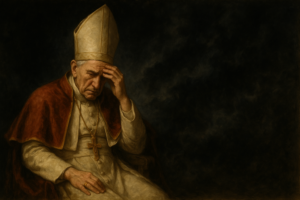The Younger Dryas event, a mysterious climatic anomaly that occurred approximately 12,900 years ago, holds many geological secrets. As scientists unearth the layers of evidence surrounding this event, it sparks intriguing questions about the possibility of a deep-seated genetic memory within human cultures, manifesting in the celebrations of holidays like Halloween, Samhain, and the Day of the Dead.
Geological Discoveries and the Younger Dryas Event
The Younger Dryas was marked by a sudden and severe cooling period, which had dramatic implications for Earth’s climate and ecosystems. Geological discoveries have revealed critical insights into this event:
1. The Black Mat: One of the most compelling pieces of evidence is the presence of a distinct layer of black sediment, often referred to as the “black mat.” This layer can be found in various locations worldwide and contains microspherules and nanodiamonds, suggesting a high-energy event. Many scientists propose that an asteroid or comet impact could be responsible for this layer.
2. Ice Sheet and Ocean Changes: Other theories center around the release of freshwater from the melting Laurentide Ice Sheet, which could have disrupted the North Atlantic Meridional Overturning Circulation (AMOC). Such changes in ocean circulation patterns may have played a role in the sudden cooling.
3. Climate Impact: The Younger Dryas led to a substantial drop in temperatures, causing ice sheets and glaciers to advance. This drastic climate change had far-reaching effects, resulting in the extinction of several large mammals and significant shifts in ecosystems.
Speculations on Genetic Memory
The intriguing connection between geological discoveries surrounding the Younger Dryas event and cultural celebrations like Halloween, Samhain, and the Day of the Dead lies in the collective human experience of death and destruction. Could these holidays be a manifestation of an ancient genetic memory?
1. Halloween: Warding Off Evil Spirits: The tradition of carving pumpkins, lighting candles, and donning costumes may trace back to the collective memory of an apocalyptic event, such as an asteroid impact. The need to ward off malevolent spirits may be rooted in the primal fear of such destructive forces.
2. Samhain: The Celtic New Year: Samhain, marking the end of the old year and the beginning of the new, may have ancient ties to the dramatic climatic shift. The transformative rituals, including disguises and bonfires, could have been efforts to adapt to a world that was rapidly changing.
3. Day of the Dead: Honoring Ancestors and the Earth’s Past: The Day of the Dead, with its ofrendas and cemetery visits, is a powerful homage to ancestors. Could it be that this tradition resonates with an inherent human longing to reconnect with those who lived through ancient cataclysms and to remember their struggles and resilience?
Conclusion: A Deep-Rooted Connection
While the connection between geological events like the Younger Dryas and cultural celebrations remains speculative, it is undeniable that human history is intertwined with our planet’s tumultuous past. The geological discoveries surrounding the Younger Dryas event raise questions about the deep-seated genetic memory of Earth’s history of death and destruction. Whether these memories are imprinted in our cultural celebrations or not, they remind us of the enduring connection between humanity and the ever-evolving Earth. As we celebrate these holidays, we honor both our ancestors and the ancient forces that have shaped our world.



